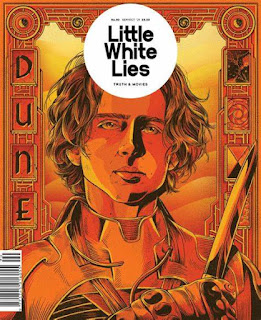What comments can you make about these contents pages? Think about things such as:
- are they single or double pages?
- the layout of the different elements on the page
- the different sections of the magazine that are shown in the contents pages
- the actual content - what can be found inside the magazine?
- the use of typography - font, size, use capitalisation/lower case, text direction, etc
- the use of images
- the use of page numbers
Analysis of the contents pages (Sight and Sound, Little White Lies & Film Stories):
In terms of the contents pages, majority of the magazines besides Film Stories have used a single page contents page within their edition. The Sight and Sound contents page follows a strict layout, generally the contents page in all of the magazines are identical. The layout and composition of all three contents are different but they still follow the same concept. For Sight and Sound the content is displayed in columns which outline a specific section. The overall design is very simplistic and easy for readers to find out what type of content is within the specific edition of magazine. The black and white colour pallet also adds to the minimal theme. In relation to the actual content displayed on the page it is based around different elements of film such as opening scenes, endings, wider screen and DVD & BLU-RAY. The Sight and Sound contents pages use a sans-serif font in a black, while the headings are capitalised to ensure prominence. The page also has a variety of horizontal and vertical font and images which are all close up shots of contributors to the magazine. Page numbers are clearly displayed in a bold black font which helps readers see what pages they need to turn to in order to see the content.
For Little White Lies all of the editions follow a similar layout and all contain the same elements. The issue number is in the top left and in the centre it displays the page numbers and topics that this edition has. Surrounding the copy there is empty mass which allows space for illustrations which link to the front cover. The different sections are also displayed in columns followed by the heading 'FEATURE CONTENTS'. Inside the Little White Lies magazine in terms of the actual content readers can expect to find pages on the 'Lead Review' film and other current popular films. The Film Stories contents page is on a double page spread. The page numbers on the page are in a bold white font, located in a coloured box which matches the colour pallet of the magazine and its front cover page. When it comes to the use of images, each double page traditionally has four images which predominantly takes up the page by being located in the middle. Like other contents page there is a wide range of topics such as News Reports, Fashion, Interviews and Reviews.





















